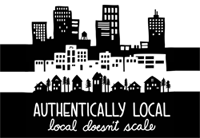UPDATE (Tuesday, December 13): We’ve just heard the good news from Anthony (via email): “Just an update, we got in touch with the owners of the white cat last night! He is from a home around 56th and 12th. Thank you again so much for posting that on the blog!”
____________________
Readers Anthony and Julia may have found your lost kitty (via email, emphasis ours):

We were just opening the door to leave the apartment and the crafty little guy just snuck inside! We’re on the 1300 block of NE Ravenna [Blvd], so just across from Cowen Park. He’s an all-white adult male, extremely curious and friendly to humans, which leads us to believe he might belong to someone (no collar or microchip, however). We think he may have been missing for a while because he was a bit dirty and had a minor infection around one of his eyes. I have attached a photo that we took. We had to take him into the Seattle Animal Shelter, because our lease doesn’t allow for pets, but we really want to find his owners who must miss him very much!
Anthony and Julia live in the neighborhood nexus of the Ravenna, Roosevelt, and University District neighborhoods, so Lost White Kitty could be from any one of those.








Stay Connected